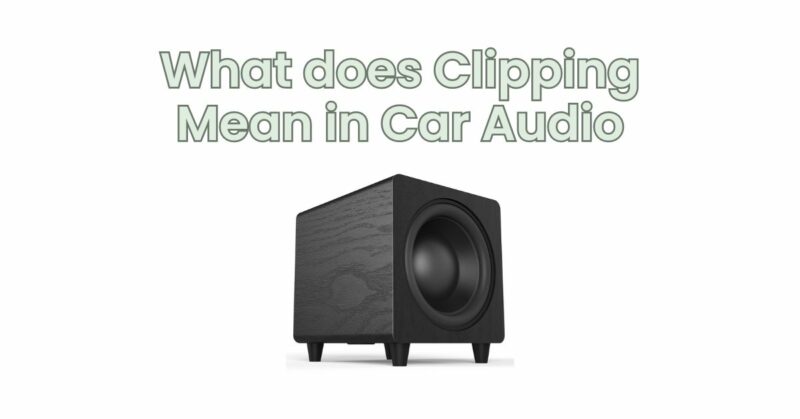Clipping is a common phenomenon in car audio systems that can significantly impact sound quality and potentially damage audio equipment. It occurs when an amplifier is pushed beyond its maximum power output, resulting in distortion and potentially harmful square waveforms. In this article, we will delve into what clipping means in car audio, its causes, effects, and explore solutions to mitigate clipping and ensure optimal audio performance.
- Clipping Explained: In car audio, clipping refers to the distortion that occurs when the amplifier is unable to accurately reproduce an audio signal due to reaching or exceeding its maximum power output. Instead of faithfully reproducing the original waveform, the amplifier “clips” the signal, resulting in flattened or squared-off peaks. Clipping is most commonly observed in high-energy musical passages or when the amplifier is driven beyond its limits.
- Causes of Clipping: Clipping is typically caused by one or more of the following factors: a. Overdriving the amplifier: Pushing the amplifier beyond its maximum power output by increasing the volume level excessively or using improper gain settings. b. Insufficient power supply: Inadequate power supply or voltage drops can limit the amplifier’s ability to deliver the required power, leading to clipping. c. Impedance mismatch: Connecting speakers with an impedance lower than the amplifier’s minimum rating can overload the amplifier and induce clipping. d. Improper gain settings: Setting the amplifier’s gain too high can introduce distortion and increase the likelihood of clipping.
- Effects of Clipping: Clipping has several adverse effects on audio quality: a. Distortion: Clipping introduces audible distortion, causing a harsh and unpleasant sound that masks the original audio signal. b. Loss of dynamic range: Clipping reduces the system’s dynamic range, resulting in compressed and lifeless audio reproduction. c. Speaker damage: Clipped signals contain high-energy content that can overheat and damage speakers, particularly tweeters and subwoofers. d. Increased power draw: When an amplifier clips, it requires more power to produce the same perceived volume, straining the electrical system.
- Solutions to Mitigate Clipping: To prevent or minimize clipping in car audio systems, consider the following solutions: a. Set proper gain levels: Adjust the amplifier’s gain settings according to the manufacturer’s recommendations and avoid overdriving the amplifier. b. Ensure adequate power supply: Install an appropriate power supply and consider using a capacitor or secondary battery to minimize voltage drops. c. Match speaker impedance: Use speakers with impedance that matches or exceeds the amplifier’s minimum rating to prevent overloading. d. Monitor signal levels: Utilize an oscilloscope or a dedicated clipping indicator to monitor the signal and detect clipping visually or audibly. e. Upgrade components: Consider upgrading to a more powerful amplifier or speakers that can handle higher power levels without distortion.
Understanding clipping in car audio is crucial for achieving optimal sound quality and protecting audio equipment. Clipping occurs when an amplifier is pushed beyond its limits, resulting in distortion and potential damage to speakers. By setting proper gain levels, ensuring adequate power supply, matching speaker impedance, monitoring signal levels, and upgrading components if necessary, you can minimize or eliminate clipping, allowing for cleaner, distortion-free audio reproduction in your car audio system.


